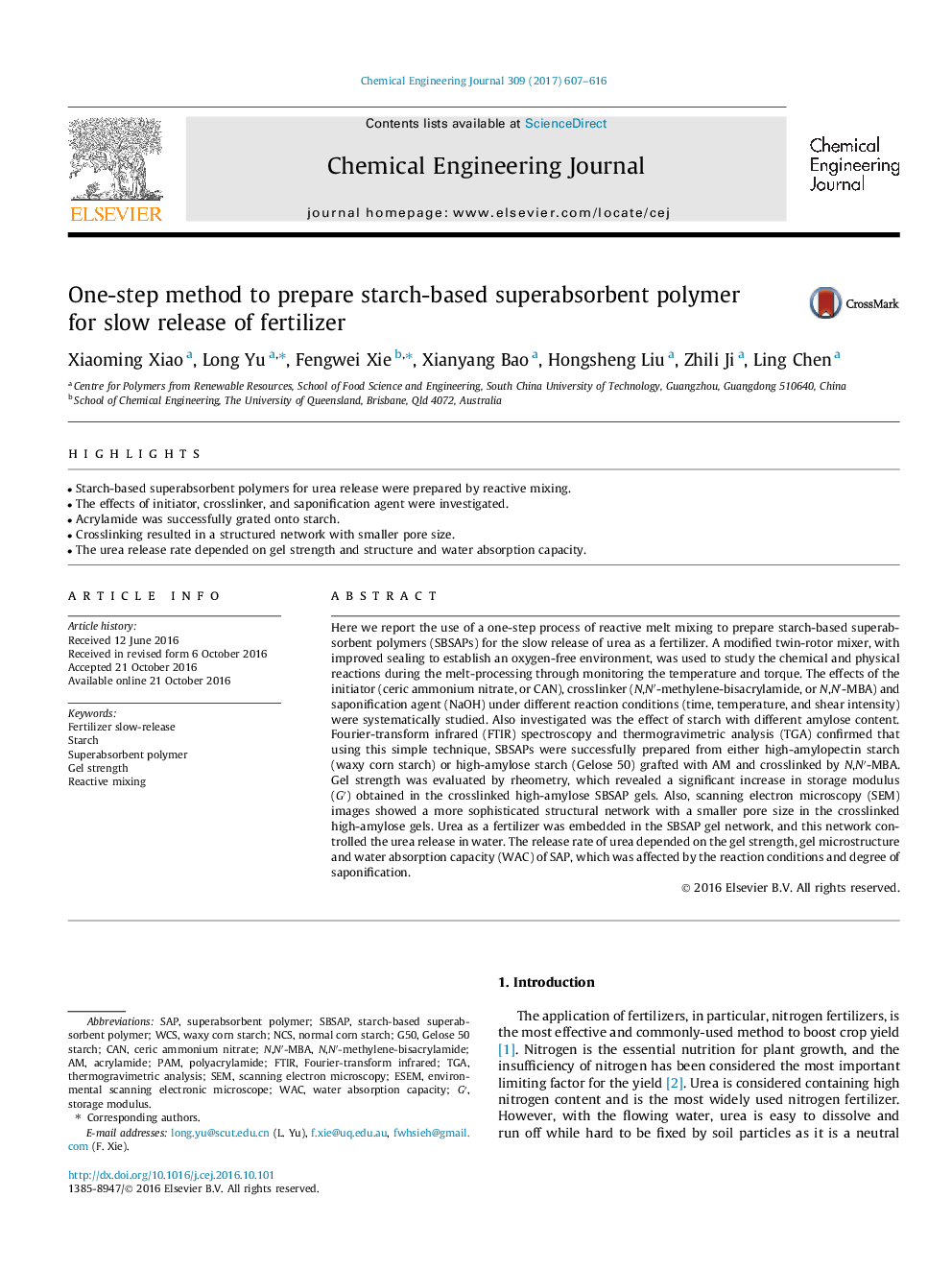| Article ID | Journal | Published Year | Pages | File Type |
|---|---|---|---|---|
| 4763667 | Chemical Engineering Journal | 2017 | 10 Pages |
Abstract
Here we report the use of a one-step process of reactive melt mixing to prepare starch-based superabsorbent polymers (SBSAPs) for the slow release of urea as a fertilizer. A modified twin-rotor mixer, with improved sealing to establish an oxygen-free environment, was used to study the chemical and physical reactions during the melt-processing through monitoring the temperature and torque. The effects of the initiator (ceric ammonium nitrate, or CAN), crosslinker (N,Nâ²-methylene-bisacrylamide, or N,Nâ²-MBA) and saponification agent (NaOH) under different reaction conditions (time, temperature, and shear intensity) were systematically studied. Also investigated was the effect of starch with different amylose content. Fourier-transform infrared (FTIR) spectroscopy and thermogravimetric analysis (TGA) confirmed that using this simple technique, SBSAPs were successfully prepared from either high-amylopectin starch (waxy corn starch) or high-amylose starch (Gelose 50) grafted with AM and crosslinked by N,Nâ²-MBA. Gel strength was evaluated by rheometry, which revealed a significant increase in storage modulus (Gâ²) obtained in the crosslinked high-amylose SBSAP gels. Also, scanning electron microscopy (SEM) images showed a more sophisticated structural network with a smaller pore size in the crosslinked high-amylose gels. Urea as a fertilizer was embedded in the SBSAP gel network, and this network controlled the urea release in water. The release rate of urea depended on the gel strength, gel microstructure and water absorption capacity (WAC) of SAP, which was affected by the reaction conditions and degree of saponification.
Keywords
Related Topics
Physical Sciences and Engineering
Chemical Engineering
Chemical Engineering (General)
Authors
Xiaoming Xiao, Long Yu, Fengwei Xie, Xianyang Bao, Hongsheng Liu, Zhili Ji, Ling Chen,
